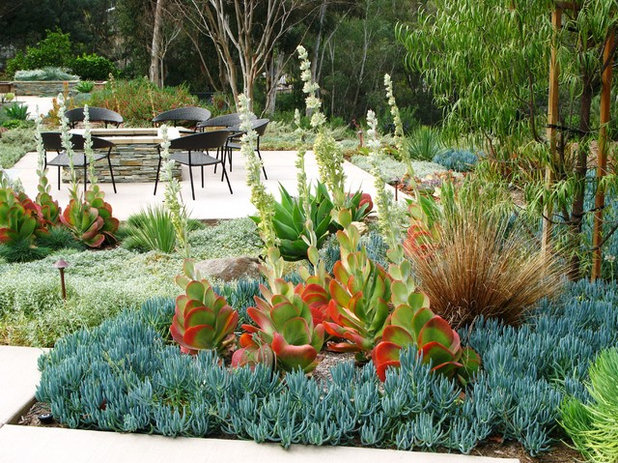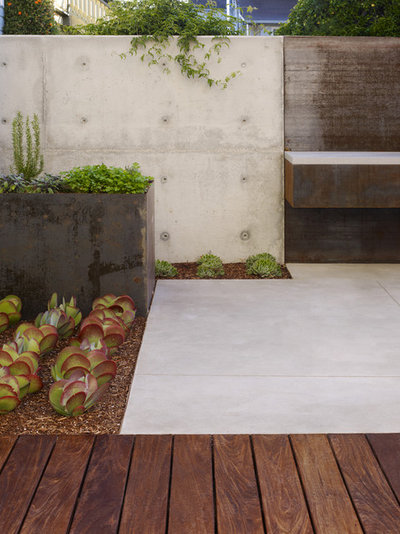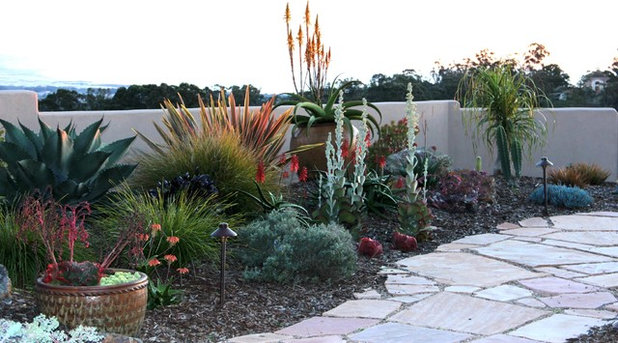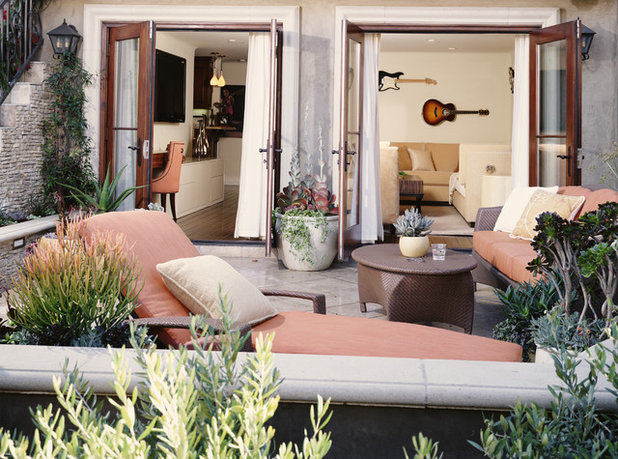Paddle plant offers high impact even for a succulent. There are more than 125 species in the
Kalanchoe genus, but
Kalanchoe luciae is distinct. Its flat, stacking leaves contribute to its popularity in the world of succulent landscape design. It was sold for many years under the name
Kalanchoe thrysiflora, and plantsmen only somewhat recently corrected this error, emphasizing
Kalanchoe luciae as the clear crowd favorite.
Topping the list of commonly grown succulents, it has a soaring popularity that offers more opportunities to appreciate and enjoy its bizarreness. Whether or not you grow paddle plant for its easy disposition or eccentric coloring and shape, you're sure to always be pleased and surprised by it.

debora carl landscape design
Botanical name: Kalanchoe luciae (often mislabeled
Kalanchoe thrysiflora)
Common names: Paddle plant, paddle kalanchoe, red pancakes, desert cabbage, flapjack plant
USDA zones: 9 to 11 (find your zone); hardy to 25 or 30 degrees Fahrenheit; can be grown as a houseplant
Water requirement: Moderate until established; water when dry
Light requirement: Full sun, partial shade in hottest climates; bright light if grown indoors
Mature size: 1 to 1 1/2 feet tall and wide
Benefits and tolerances: Can be grown indoors; drought tolerant
Seasonal interest: Year-round; Kalanchoe are monocarpic, meaning they flower once, set seed and then die
When to plant: Cuttings can be planted year-round; wait until the end calluses over
Shown: With blue chalk sticks (
Senecio mandraliscae)

Christopher Yates Landscape Architecture
Distinguishing traits. Fleshy, gray-green, flat leaves grow off a central stalk to 1 1/2 feet tall and wide. When exposed to prolonged winter sunlight, paddle plant’s leaf margins turn deep pink — fantastically freakish for foliage. Miniature paddle offsets let you know your Kalanchoe is thriving.
Mature paddle plants sprout a single flower stalk in late winter or early spring. As with other monocarpic succulents, this signals Kalanchoe’s impending death. Not to worry; this central flower stalk also produces offsets of future paddle plant generations. Simply snip the offsets off the stalk, allow the ends to callus over and replant them.

Gardens by Gabriel, Inc.
How to use it. For a diverse desertscape, intermingle Kalanchoe among other succulent silhouettes. Paddle plant has also been compared to underwater coral, and I’ve seen it playfully used to mimic sunken landscapes.
Succulents thrive year-round in a mild climate like California’s, but paddle plant will just as easily survive indoors.

Sarah Barnard Design
Planting notes. Give
Kalanchoe luciae at least five hours of daily sun, preferably in the morning. In hottest climates, plant it in partial shade. Like most succulents, it is sensitive to soil moisture, so avoid overwatering by simply checking the soil for moisture. Good drainage and air circulation will help prevent mold and mildew. Keep an eye out for slugs and snails.
When in doubt do less for it, rather than more. Succulents in the right location tend to do just fine when left unsupervised.





